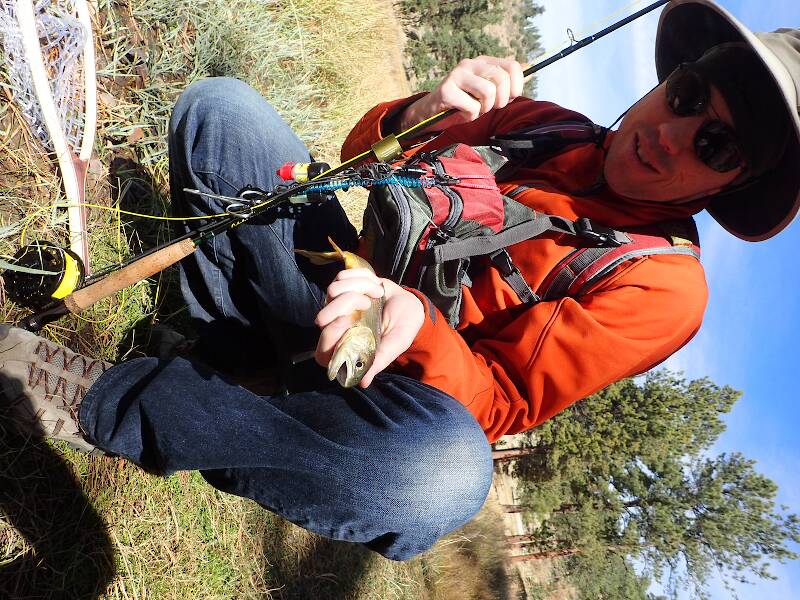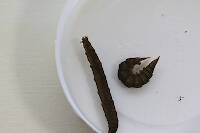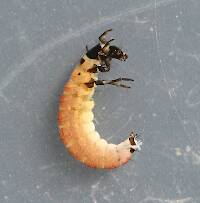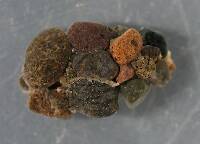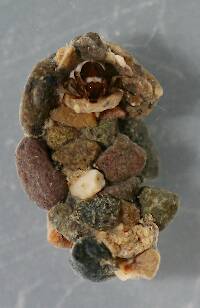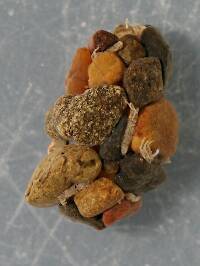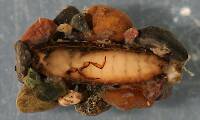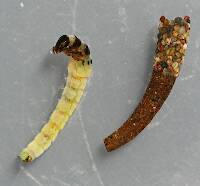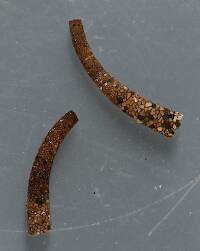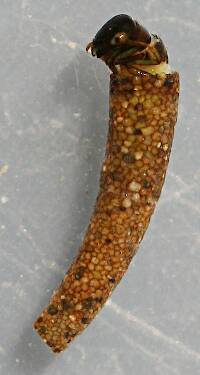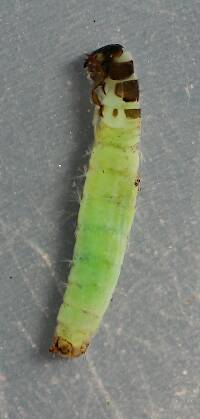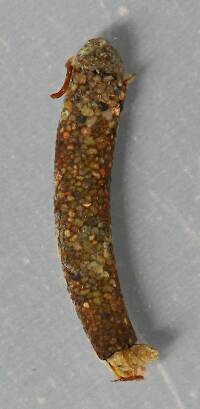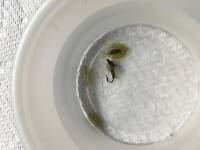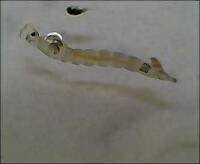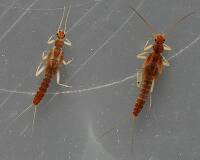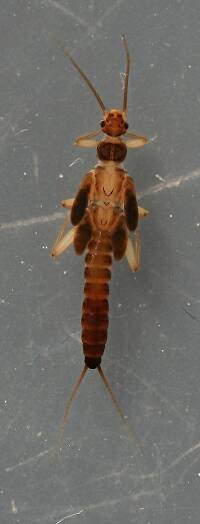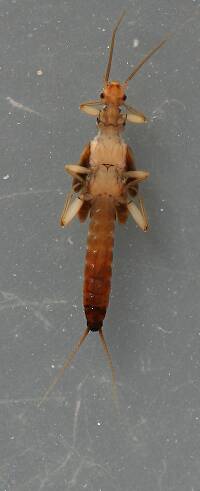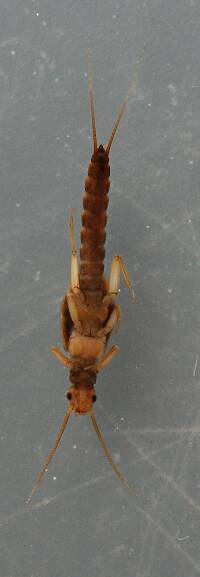
Salmonflies
Pteronarcys californica
The giant Salmonflies of the Western mountains are legendary for their proclivity to elicit consistent dry-fly action and ferocious strikes.
Featured on the forum

Troutnut is a project started in 2003 by salmonid ecologist Jason "Troutnut" Neuswanger to help anglers and
fly tyers unabashedly embrace the entomological side of the sport. Learn more about Troutnut or
support the project for an enhanced experience here.
ARangler on Jan 21, 2017January 21st, 2017, 2:23 am EST
Greetings! To introduce myself, I am a new fly fisherman living next to, as I'm told, some of the best tail water fishing in the nation, that is a (or 'the'?) dammed portion of the Arkansas River in Pueblo, CO. A buddy and me took a class at our local fly fishing shop last May and I've steadily been growing in interest with the sport (or art?) ever since. I've gone out to several locations in the southern Colorado area since then, have caught (and released) many fish, and have fallen in love with Rainbow Trout specifically.
The idea of studying bugs has always interest me even before I considered fly fishing but up to now it has always just been an idea. I will be acclimating myself with the forum, it's threads, and the photo gallery section of this website going forward, but if I were to go out and take pictures of the local bugs, is there any risk of being stung or bitten as I may pick them up for certain shots? Specifically the mayfly, stonefly, and caddisfly varieties?
The idea of studying bugs has always interest me even before I considered fly fishing but up to now it has always just been an idea. I will be acclimating myself with the forum, it's threads, and the photo gallery section of this website going forward, but if I were to go out and take pictures of the local bugs, is there any risk of being stung or bitten as I may pick them up for certain shots? Specifically the mayfly, stonefly, and caddisfly varieties?
Taxon on Jan 21, 2017January 21st, 2017, 2:39 am EST
Hi there-
No, you certainly won't be bitten or stung by mayflies, stoneflies, or caddisflies.
Best regards,
No, you certainly won't be bitten or stung by mayflies, stoneflies, or caddisflies.
Best regards,
Millcreek on Jan 21, 2017January 21st, 2017, 2:52 am EST
Hi ARangler-
As Taxon says you should be fine with caddiflies, mayflies, and stoneflies but
watch out for giant water bugs and their smaller counterparts. Here's a link to an article on them. https://blogs.scientificamerican.com/artful-amoeba/the-attack-of-the-giant-water-bug/
Thankfully they are somewhat rare to find.
As Taxon says you should be fine with caddiflies, mayflies, and stoneflies but
watch out for giant water bugs and their smaller counterparts. Here's a link to an article on them. https://blogs.scientificamerican.com/artful-amoeba/the-attack-of-the-giant-water-bug/
Thankfully they are somewhat rare to find.
"If we knew what it was we were doing, it would not be called research, would it?"
-Albert Einstein
-Albert Einstein
PaulRoberts on Jan 23, 2017January 23rd, 2017, 2:47 am EST
You are completely safe.
As Roger and Mark mention, some aquatic hemipterids -namely giant water bug and backswimmers- can bite, but only defensively. They tend to inhabit warm stillwaters. A look-alike to the backswimmer is the boatman (Corixidae) and these can be found in colder waters and river edges, and these do not bite.
Outside of these, and I suppose helgrammites (dobsonfly larvae which have large mandibles and can be found in warmer stretches of larger rivers), there is nothing that will, or can, harm you in trout streams. You will be the scariest creature there. :)
As Roger and Mark mention, some aquatic hemipterids -namely giant water bug and backswimmers- can bite, but only defensively. They tend to inhabit warm stillwaters. A look-alike to the backswimmer is the boatman (Corixidae) and these can be found in colder waters and river edges, and these do not bite.
Outside of these, and I suppose helgrammites (dobsonfly larvae which have large mandibles and can be found in warmer stretches of larger rivers), there is nothing that will, or can, harm you in trout streams. You will be the scariest creature there. :)
Wbranch on Jan 23, 2017January 23rd, 2017, 3:52 am EST
Watch out for these -
http://tse1.mm.bing.net/th?&id=OIP.M0139d03e8ec2cabaae4327d07a3864c8H0&w=300&h=174&c=0&pid=1.9&rs=0&p=0&r=0
This is an adult Dobson fly. They are the biggest flying aquatic insect I have ever seen. I most often see them flying around near dusk and they are pretty creepy. By the looks of those big mandibles they could probably give you a painful bite of they were to land on you.
I've never been bitten but have almost fallen in a couple of times flailing at them with both arms like a mad man!
http://tse1.mm.bing.net/th?&id=OIP.M0139d03e8ec2cabaae4327d07a3864c8H0&w=300&h=174&c=0&pid=1.9&rs=0&p=0&r=0
This is an adult Dobson fly. They are the biggest flying aquatic insect I have ever seen. I most often see them flying around near dusk and they are pretty creepy. By the looks of those big mandibles they could probably give you a painful bite of they were to land on you.
I've never been bitten but have almost fallen in a couple of times flailing at them with both arms like a mad man!
Catskill fly fisher for fifty-five years.
Jmd123 on Jan 23, 2017January 23rd, 2017, 10:13 am EST
Matt, I wonder if a trout would ever gobble one of those things if it crash-landed on the water? It would have to be a good-sized fish - and a fly to imitate it?? Tied on a 10x-long #2?? And I have heard their larvae, a.k.a. hellgrammites, can pinch pretty hard. Looks like their jaw structure doesn't change that much from nymph to adult...
Jonathon
Jonathon
No matter how big the one you just caught is, there's always a bigger one out there somewhere...
Wbranch on Jan 23, 2017January 23rd, 2017, 10:26 am EST
I have seen adults flying around on the Delaware and a friend of mine said one bit him on the neck. I saw one on a canoe this past summer on the Susquehanna. Maybe a trout would rise to eat one but it might have to be wiggling it's body to attract a trout's attention. Considering their are many larvae in the rivers I fish one might suppose you would see them more often. This makes me think they are nocturnal feeders and light on to streamside vegetation during daylight hours. I wonder what their lifespan is once they emerge as adults?
Catskill fly fisher for fifty-five years.
Jmd123 on Jan 23, 2017January 23rd, 2017, 10:43 am EST
I would guess the adults live for a season or less, maybe a few weeks? I have seen them primarily in the warmest months, particularly July, though never more than one at a time. It seems like those big mandibles on the adults should be useful for something, so who knows if or what they feed on. Never had one bite me, was it perhaps going for some salty sweat on your friend's neck?
Jonathon
Jonathon
No matter how big the one you just caught is, there's always a bigger one out there somewhere...
PaulRoberts on Jan 24, 2017January 24th, 2017, 2:47 am EST
Dobsons are mostly warmwater critters, found below trout water in watersheds. Now Fishflies are a different story; they are also Corydalids and are nearly as large as Dobsons. They can make for some great nymphing -my own UltHelgrammite pattern has accounted for more nymph caught big browns than any other nymph for myself and friends I've shared it with. In fact, I got an email not so long ago from a fishing buddy back east who took his personal best brown -a 22- on it from a big pool in a small stream. My PB small-stream brown -a 23- was also caught on the fly in a "Fishfly stretch" -think mid-reach large stonefly habitat.
Corydalid dries are not likely to produce as intended, apparently since adults pretty much avoid the water, laying eggs above the water on protruding objects. The early larvae then fall into the stream upon hatching. This does not preclude one from fishing BIG dry flies at night however, but Corydalid adults are not the reason this works.
Fishflies can bite too, having strong jaws (they are predators) and they will bite defensively. I once dropped one into an aquarium with a large creek chub and the chub narfed that hellgy, and then got a rude surprise! It was bite on the tongue -hard- and would have nothing to do with it after.
That said, one can handle them quite easily by paying attention to the painful end, or by letting them crawl on a flat hand. Without an obvious "target" they aren't aware of anything to defend against. This also works with lots of small critters, including small-ish rodents, who you'd think would know better. :) But, most critters are defensive, not offensive.
Corydalid dries are not likely to produce as intended, apparently since adults pretty much avoid the water, laying eggs above the water on protruding objects. The early larvae then fall into the stream upon hatching. This does not preclude one from fishing BIG dry flies at night however, but Corydalid adults are not the reason this works.
Fishflies can bite too, having strong jaws (they are predators) and they will bite defensively. I once dropped one into an aquarium with a large creek chub and the chub narfed that hellgy, and then got a rude surprise! It was bite on the tongue -hard- and would have nothing to do with it after.
That said, one can handle them quite easily by paying attention to the painful end, or by letting them crawl on a flat hand. Without an obvious "target" they aren't aware of anything to defend against. This also works with lots of small critters, including small-ish rodents, who you'd think would know better. :) But, most critters are defensive, not offensive.
Quick Reply
Related Discussions
Topic
Replies
Last Reply
4
Oct 29, 2014
by Millcreek
by Millcreek
3
Jul 15, 2019
by Tuckcast
by Tuckcast
2
Apr 7, 2012
by Crepuscular
by Crepuscular
Re: One of my favorite Montana views and the Madison River 
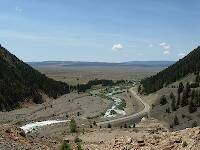
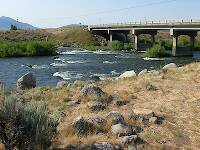
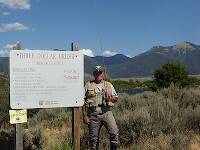
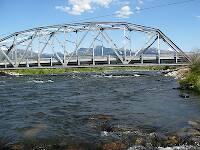
In the Photography Board by Wiflyfisher
+ 1





In the Photography Board by Wiflyfisher
16
Jan 7, 2012
by Wiflyfisher
by Wiflyfisher
3
Nov 22, 2007
by GONZO
by GONZO



